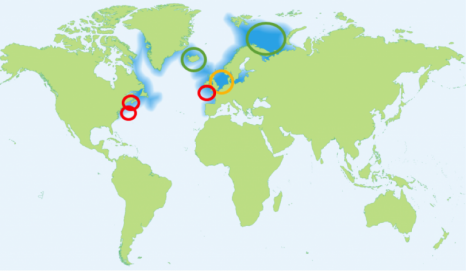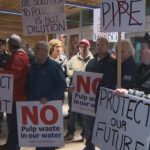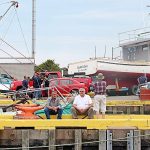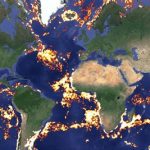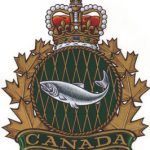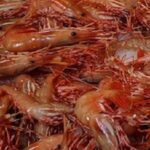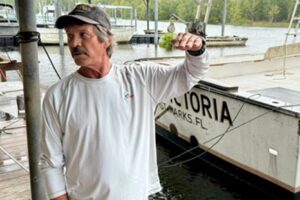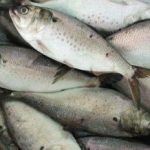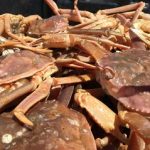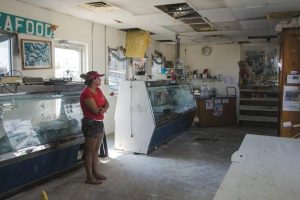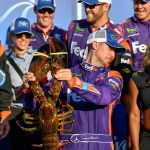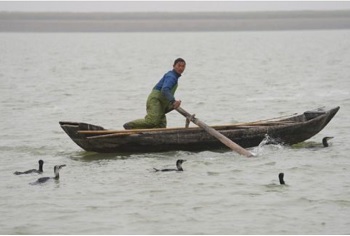Daily Archives: November 1, 2016
Northeast Trawl Advisory Panel Members Witness Bigelow Survey Operations
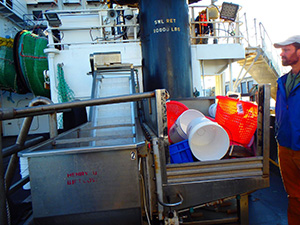 Three members of the Northeast Trawl Advisory Panel (NTAP), a new member of the New England Fishery Management Council and several of their colleagues made a day trip on the NOAA Ship Henry B. Bigelow October 11 to observe bottom trawl operations on the vessel, which is in the midst of the autumn bottom trawl survey. “The idea was to allow NTAP members to see how we operate under real survey conditions” said Rob Johnston, chief of the Northeast Fisheries Science Center’s (NEFSC) Ecosystems Surveys Branch. The group boarded the Bigelow early Tuesday morning, the first day of Leg 3 of the fall survey, at the Newport Naval Station in Rhode Island and headed offshore just south of Rhode Island Sound.,, “The trip on the Bigelow was very informative and answered many of the questions I had about the trawl mensuration system,” said Chris Roebuck, a fisherman from Pt. Judith, RI and a NTAP member. “The trip confirmed my belief that the survey is not at fault for the mismatches between what we see on the water and what comes out as an end result in management. Rather the interpretation of what that survey information means and how it is incorporated into management is to blame. The trip also made me realize that there are many more obstacles to overcome in our transition to industry vessels supplementing the Bigelow survey.” Read the story here 20:31
Three members of the Northeast Trawl Advisory Panel (NTAP), a new member of the New England Fishery Management Council and several of their colleagues made a day trip on the NOAA Ship Henry B. Bigelow October 11 to observe bottom trawl operations on the vessel, which is in the midst of the autumn bottom trawl survey. “The idea was to allow NTAP members to see how we operate under real survey conditions” said Rob Johnston, chief of the Northeast Fisheries Science Center’s (NEFSC) Ecosystems Surveys Branch. The group boarded the Bigelow early Tuesday morning, the first day of Leg 3 of the fall survey, at the Newport Naval Station in Rhode Island and headed offshore just south of Rhode Island Sound.,, “The trip on the Bigelow was very informative and answered many of the questions I had about the trawl mensuration system,” said Chris Roebuck, a fisherman from Pt. Judith, RI and a NTAP member. “The trip confirmed my belief that the survey is not at fault for the mismatches between what we see on the water and what comes out as an end result in management. Rather the interpretation of what that survey information means and how it is incorporated into management is to blame. The trip also made me realize that there are many more obstacles to overcome in our transition to industry vessels supplementing the Bigelow survey.” Read the story here 20:31
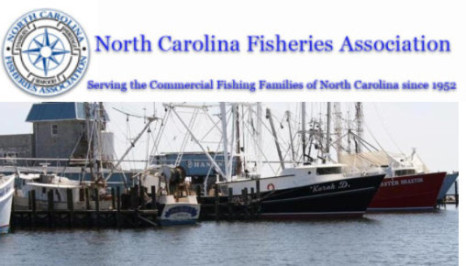
North Carolina Fisheries Association Weekly Update for October 31, 2016
Click here to read the Weekly Update, to read all the updates, Click here 19:57
The Opposition get’s nasty! Scallop fishing restart criticised by TV’s Iolo Williams
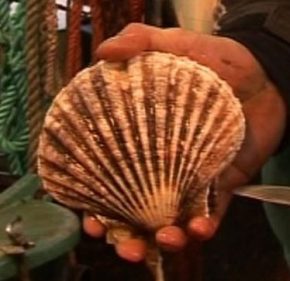 Commercial fishing ended in Cardigan Bay, Ceredigion, five years ago when it became a special area of conservation. The Welsh government has approved limited fishing in specific areas using a “flexible permit scheme”. But TV presenter Williams said it “opens the door for ploughing the sea bed on an industrial scale”. In a post on his facebook page, he wrote: “This does not support local, sustainable fisheries. “I’m dismayed but not surprised that this bunch of worthless parasites has, once again, supported the destruction of an internationally important wildlife site.” “I am appalled that the Welsh government, who are supposed to have sustainability at the heart of all their work, can contemplate opening up a protected area to such a destructive fishing method,” he added. The decision came after a two-year study found limited fishing in certain areas would have no adverse impact on the area. On Tuesday, the Whale and Dolphin Conservation (WDC) group revealed its “disbelief and disappointment” at the approval because of Cardigan Bay’s “habitat for bottlenose dolphins and porpoise”. OMG! Read the story here 16:56
Commercial fishing ended in Cardigan Bay, Ceredigion, five years ago when it became a special area of conservation. The Welsh government has approved limited fishing in specific areas using a “flexible permit scheme”. But TV presenter Williams said it “opens the door for ploughing the sea bed on an industrial scale”. In a post on his facebook page, he wrote: “This does not support local, sustainable fisheries. “I’m dismayed but not surprised that this bunch of worthless parasites has, once again, supported the destruction of an internationally important wildlife site.” “I am appalled that the Welsh government, who are supposed to have sustainability at the heart of all their work, can contemplate opening up a protected area to such a destructive fishing method,” he added. The decision came after a two-year study found limited fishing in certain areas would have no adverse impact on the area. On Tuesday, the Whale and Dolphin Conservation (WDC) group revealed its “disbelief and disappointment” at the approval because of Cardigan Bay’s “habitat for bottlenose dolphins and porpoise”. OMG! Read the story here 16:56
‘Deadliest Catch’ Season 13: Captains Bill Wichrowski and Keith Colburn’s life more appealing than Josh Harris?
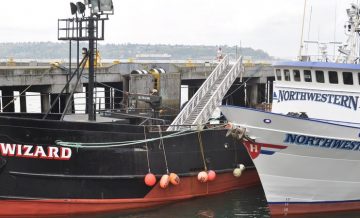 Discovery Channel’s “Deadliest Catch” season 13 is already up for production and already a captain is not coming back. Rumors are swirling that the lives of Captains Wild Bill Wichrowski and Keith Colburn are more appealing than that of Josh Harris. “This a critical year, because a lot of those boats are up for contracts because they thought the show was only to run for 10 years, myself included,” Wichrowski said. “This is my contract year. I’m seriously trying to get Zack into the wheelhouse and that’s going to take a little time. So we’ll see what happens. Aside from Captain Wichrowski, another Captain is also adjusting to his life these days after his divorce. In Season 12, Captain Keith Colburn of F/V Wizard parted ways with his wife of 25 years and the coming season will test his stability in the wheelhouse. Read the story here 14:20
Discovery Channel’s “Deadliest Catch” season 13 is already up for production and already a captain is not coming back. Rumors are swirling that the lives of Captains Wild Bill Wichrowski and Keith Colburn are more appealing than that of Josh Harris. “This a critical year, because a lot of those boats are up for contracts because they thought the show was only to run for 10 years, myself included,” Wichrowski said. “This is my contract year. I’m seriously trying to get Zack into the wheelhouse and that’s going to take a little time. So we’ll see what happens. Aside from Captain Wichrowski, another Captain is also adjusting to his life these days after his divorce. In Season 12, Captain Keith Colburn of F/V Wizard parted ways with his wife of 25 years and the coming season will test his stability in the wheelhouse. Read the story here 14:20
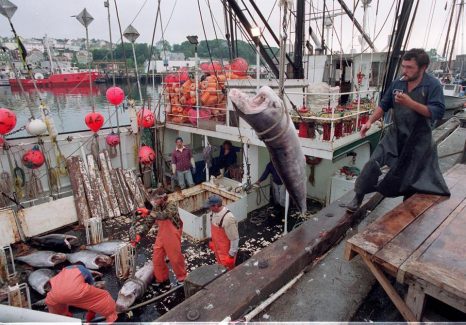
25 Years ago. Seaport says goodbye to men lost at sea
GLOUCESTER— This historic seaport, which has lost as many as 10,000 of its fishermen at sea over the centuries, bade a tearful farewell to three more at a crowded funeral yesterday. More than 1,000 people packed St. Ann’s Church for a Mass in the memory of four of the fishermen — three of them from Gloucester — presumed to have died when the fishing vessel Andrea Gail was lost off the coast of Canada during last month’s northeaster. “The sea was their domain. They knew it well,” said Rev. Richard Casey, of Gloucester natives Frank W. (Billy) Tyne, 37, David P. Sullivan, 29, and Robert Shatford, 30, who were among six aboard the ill-fated fishing vessel. Father Casey urged those in attendance to mourn not only the three, but the “other brave people who gave their lives for Gloucester and its fishing industry.” Read the story here 13:48
Transportation Safety Board of Canada looks to make fishing industry safer
 The TSB said the fishing industry has been on its ‘watch list’ since 2010 for two main reasons: use of PFDs and the safety of vessels. The hope is education nationally and locally will help increase the use of the personal floatation devices. Minister of Transport Marc Garneau said wearing PFDs is important and that his department has already looked at the safety of boats smaller than 24.4 metres. “Stability of a vessel is critical as well,” Garneau said. “I’m ex-Navy, I know all about stability in a ship. We have come out with measures recently that are for small vessels.” Garneau said the next step is looking at vessels of all sizes, something that is not complete but which he says his department is working on. Read the story here 13:18
The TSB said the fishing industry has been on its ‘watch list’ since 2010 for two main reasons: use of PFDs and the safety of vessels. The hope is education nationally and locally will help increase the use of the personal floatation devices. Minister of Transport Marc Garneau said wearing PFDs is important and that his department has already looked at the safety of boats smaller than 24.4 metres. “Stability of a vessel is critical as well,” Garneau said. “I’m ex-Navy, I know all about stability in a ship. We have come out with measures recently that are for small vessels.” Garneau said the next step is looking at vessels of all sizes, something that is not complete but which he says his department is working on. Read the story here 13:18
FOR IMMEDIATE RELEASE: Division of Marine Fisheries Reopens Waters South of Cape Cod to Shellfishing
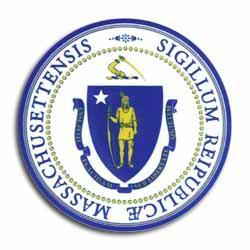 Effective immediately, the Division of Marine Fisheries (DMF) has reopened waters south of Cape Cod to shellfish harvesting, including Mount Hope Bay, Buzzards Bay, Vineyard Sound, Nantucket Sound, the islands of Martha’s Vineyard and Nantucket, and the south coast of Cape Cod. Due to the dissipation of a potentially toxic phytoplankton bloom of Pseudo-Nitzshia and the results of toxicity testing, DMF has concluded that shellfish in the reopened areas are safe to harvest for public consumption.Toxicity screening of shellfish was conducted by DMF laboratories and the Bigelow Laboratory for Ocean Sciences in Maine, and results have determined that digging, harvesting, collecting and/or attempting to dig, harvest or collect shellfish, and the possession of shellfish, is now permissible in all approved or conditionally approved waters from the Rhode Island border east into Nantucket Sound, including all of Vineyard and Nantucket Sounds and waters surrounding the islands. DMF issued a shellfish harvest closure in Buzzards Bay, Mount Hope Bay and Lackeys Bay on October 7, 2016 and issued a closure in all waters south of Cape Cod on October 9, 2016. Shellfish closure notices can be found on the DMF website. 12:54
Effective immediately, the Division of Marine Fisheries (DMF) has reopened waters south of Cape Cod to shellfish harvesting, including Mount Hope Bay, Buzzards Bay, Vineyard Sound, Nantucket Sound, the islands of Martha’s Vineyard and Nantucket, and the south coast of Cape Cod. Due to the dissipation of a potentially toxic phytoplankton bloom of Pseudo-Nitzshia and the results of toxicity testing, DMF has concluded that shellfish in the reopened areas are safe to harvest for public consumption.Toxicity screening of shellfish was conducted by DMF laboratories and the Bigelow Laboratory for Ocean Sciences in Maine, and results have determined that digging, harvesting, collecting and/or attempting to dig, harvest or collect shellfish, and the possession of shellfish, is now permissible in all approved or conditionally approved waters from the Rhode Island border east into Nantucket Sound, including all of Vineyard and Nantucket Sounds and waters surrounding the islands. DMF issued a shellfish harvest closure in Buzzards Bay, Mount Hope Bay and Lackeys Bay on October 7, 2016 and issued a closure in all waters south of Cape Cod on October 9, 2016. Shellfish closure notices can be found on the DMF website. 12:54
Commission to get briefed on Columbia River salmon fishing reforms
 State fisheries officials will brief the Washington Fish and Wildlife Commission here Saturday on the results of the 2013-2016 transition period of the Columbia River salmon management reforms and ask for guidance heading into 2017. In late 2012 and early 2013, the Washington and Oregon commissions adopted the biggest overhaul of Columbia River salmon policies in decades. Jumpstarted by former Oregon Gov. John Kitzhaber, the policies called for allocating more chinook salmon to sportsmen in the main Columbia and restricting gillnetting to off-channel sites like Youngs Bay near Astoria. Read the rest here 10:41
State fisheries officials will brief the Washington Fish and Wildlife Commission here Saturday on the results of the 2013-2016 transition period of the Columbia River salmon management reforms and ask for guidance heading into 2017. In late 2012 and early 2013, the Washington and Oregon commissions adopted the biggest overhaul of Columbia River salmon policies in decades. Jumpstarted by former Oregon Gov. John Kitzhaber, the policies called for allocating more chinook salmon to sportsmen in the main Columbia and restricting gillnetting to off-channel sites like Youngs Bay near Astoria. Read the rest here 10:41
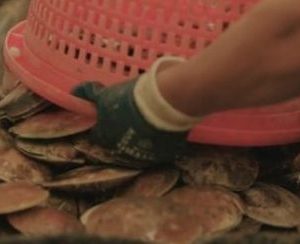
Sustaining Sea Scallops
SUSTAINING SEA SCALLOPS is a 35-minute documentary on the history and resurgence of the Atlantic sea scallop fishery, seen through the eyes of fishermen and researchers. In 1999, facing fisheries closures and bankruptcy, the scallop industry began funding a unique research program to minimize impacts on the marine environment. Fifteen years later, the Atlantic sea scallop is hailed as one of the most sustainable and lucrative fisheries in the world. From New Bedford, Massachusetts to Seaford, Virginia, fishermen and researchers tell a rare tale of renewal, offering cooperative research as a new model for sustaining healthy fisheries and fishing communities. A Connecticut fishermen describes tough times when trawl fishing went bust, and what changed once scallops started to rebound. Researchers at the Woods Hole Oceanographic Institution, the University of Massachusetts-Dartmouth, and Virginia Institute of Marine Science explain how gear innovations and better surveys ensure scallop future harvests while reducing needless harm to other species and habitat. At the heart of it all, a former NOAA Fisheries captain-turned-farmer works to increase fishermen’s access to these technologies through his non-profit research organization, the Coonamessett Farm Foundation. Watch the video here 09:52
Editorial: Fishing essential in monetary and cultural ways
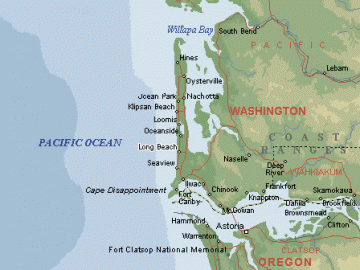 For fishing communities, the National Oceanic and Atmospheric Administration’s annual publication about commercial landings makes great reading. As we’ve observed in the past, “Fisheries of the United States” is interesting here in much the same way crop reports are a topic of fascination for farmers. Make no bones about it: Irrespective of decades of impressive economic diversification, the Lower Columbia and nearby places like Garibaldi, Newport, Willapa Bay and Westport, Washington, are fishing communities in essential cultural and monetary ways. Fishing dollars bounce around coastal towns and bolster the business climate in much the way fish fertilizer makes plants prosper. Analysis of multiyear trends points out some disturbing news about the strength of commercial fisheries on the Lower Columbia. The 2015 edition of the annual fisheries compendium from the National Marine Fisheries Service finds Astoria-area landings at something of a low ebb. Read the editorial here 09:10
For fishing communities, the National Oceanic and Atmospheric Administration’s annual publication about commercial landings makes great reading. As we’ve observed in the past, “Fisheries of the United States” is interesting here in much the same way crop reports are a topic of fascination for farmers. Make no bones about it: Irrespective of decades of impressive economic diversification, the Lower Columbia and nearby places like Garibaldi, Newport, Willapa Bay and Westport, Washington, are fishing communities in essential cultural and monetary ways. Fishing dollars bounce around coastal towns and bolster the business climate in much the way fish fertilizer makes plants prosper. Analysis of multiyear trends points out some disturbing news about the strength of commercial fisheries on the Lower Columbia. The 2015 edition of the annual fisheries compendium from the National Marine Fisheries Service finds Astoria-area landings at something of a low ebb. Read the editorial here 09:10
Coast Guard medevacs fishing vessel crewman 57 miles off Cold Bay, Alaska
 A Coast Guard Air Station Kodiak aircrew deployed to Forward Operating Location Cold Bay medevaced a 31-year-old male from a fishing vessel 57 miles west-northwest of Cold Bay Sunday morning. Watchstanders at the 17th Coast Guard District Command Center received information relayed from the Coast Guard Base Kodiak Police Department that a crew member aboard the fishing vessel Seabrooke experienced chest pains and numbness in his left arm. The duty flight surgeon recommended a medevac to a higher level of medical care within two to four hours and have the patient administered aspirin and nitroglycerin. The Jayhawk crew hoisted the crewman from the Seabrooke and transported him to the Cold Bay Medical Clinic. Due to weather, the crewman remained at the clinic until an HC-130 aircrew from Air Station Kodiak could take him to Kodiak for further medical care. Life Med transported the patient to Anchorage. “The forward operating location in Cold Bay was only 50 miles from the distress location, instead of 370 miles if you flew from Kodiak,” said Lt. Sean Glavan, duty officer, Air Station Kodiak. “We were able to get an aircrew on scene within 30 minutes of takeoff to get the crewman immediate medical attention.” Weather at the time of the medevac was driving rain with 55-knot winds and 10 to 15-foot seas. Video 08:20
A Coast Guard Air Station Kodiak aircrew deployed to Forward Operating Location Cold Bay medevaced a 31-year-old male from a fishing vessel 57 miles west-northwest of Cold Bay Sunday morning. Watchstanders at the 17th Coast Guard District Command Center received information relayed from the Coast Guard Base Kodiak Police Department that a crew member aboard the fishing vessel Seabrooke experienced chest pains and numbness in his left arm. The duty flight surgeon recommended a medevac to a higher level of medical care within two to four hours and have the patient administered aspirin and nitroglycerin. The Jayhawk crew hoisted the crewman from the Seabrooke and transported him to the Cold Bay Medical Clinic. Due to weather, the crewman remained at the clinic until an HC-130 aircrew from Air Station Kodiak could take him to Kodiak for further medical care. Life Med transported the patient to Anchorage. “The forward operating location in Cold Bay was only 50 miles from the distress location, instead of 370 miles if you flew from Kodiak,” said Lt. Sean Glavan, duty officer, Air Station Kodiak. “We were able to get an aircrew on scene within 30 minutes of takeoff to get the crewman immediate medical attention.” Weather at the time of the medevac was driving rain with 55-knot winds and 10 to 15-foot seas. Video 08:20






